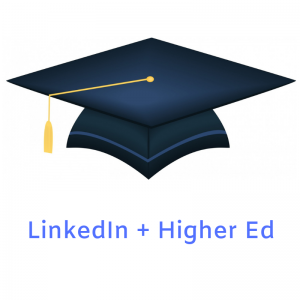Leveraging LinkedIn for higher education marketing
By Sharon Aschaiek | May 8, 2019

LinkedIn has become an increasingly useful tool for higher education marketers, and Graeme Owens knows the secret formula to help post-secondary schools make the most of the platform to achieve their goals.

Owens is the account executive for higher education for LinkedIn Marketing Solutions Canada, and his job is to partner with colleges and universities to help them leverage the content marketing and student recruitment features of LinkedIn. It’s a topic he addressed in a workshop at the recent 3rd Annual Marketing & communications for Post-Secondary Conference in Toronto.
The LinkedIn higher ed lead in Canada since 2016, Owens has observed a significant increase since then in how much higher education institutions use the social media platform to promote themselves and engage with prospects, alumni and other stakeholder audiences.
“The platform has also evolved a lot from what was viewed as a job board, to a content destination—we’re seeing 15 times more engagement with content than with job ads,” Owens says. “This has created incredible opportunities for higher ed marketers to tell their schools’ stories with content and use tools such as live video streaming and events to capture prospects directly on the platform…The schools that are thinking critically about who their audiences are and investing in LinkedIn from a content perspective are the ones that are doing very well.”
Three key approaches
LinkedIn offers plenty of tips and resources for how schools can use the platform effectively, along with examples of school success stories, here. In our interview, Owens summarized three key strategies:
Have a winning content strategy: This has become a golden rule in digital marketing and communications: sharing the right content at the right times with the right audiences is critical to raising your brand’s profile and building relationships with stakeholders. For schools, this means posting articles that have wide appeal and provide meaningful information.
“Having a thoughtful organic content strategy with regular page updates that feature relevant, brand-neutral or program-neutral content that speaks to all stakeholders is really important to increasing engagement,” Owens says.
Leverage your thought leaders: Owens says content shared directly from those associated with a school is especially meaningful, because it’s more authentic and helps reflect first-hand insights about a school. As well, he says, LinkedIn’s algorithms currently favour this kind of first-party content, meaning it will have a higher profile on the platform than other content. He says schools should encourage their president, academic deans and prominent alumni to publish articles on their school’s page.
“What a remarkable way for a school to expand and share messages with its stakeholders—this helps schools make an impact on the platform,” says Owens, adding that LinkedIn can partner with schools to create campaign calendars, ghostwrite content for schools and track the impact of posts.
Optimize your paid advertising approach: LinkedIn makes it simple for schools to create targeted ad campaigns for specific audiences and for specific purposes, such as to drive web traffic, watch videos, generate leads or convert prospects. As well, they can access a dashboard to monitor the performance of specific ads and posts, in terms of numbers of likes, shares, comments and clicks.
“What our team does is work with schools to optimize these three approaches,” Owens says. “We show them how to pull the different levers to drive engagement and increase their presence.”